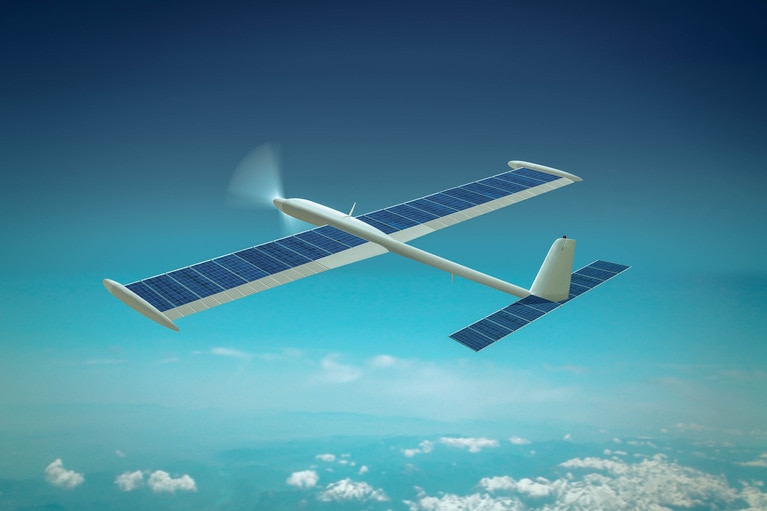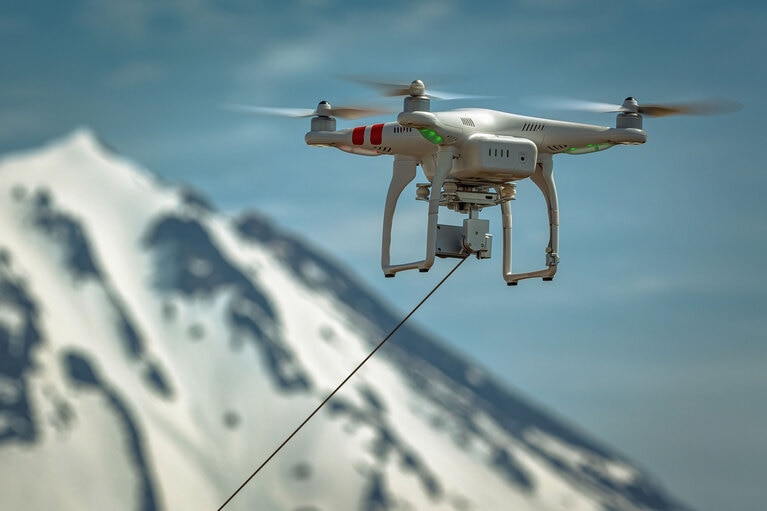
High-efficiency, high-density modules free up space for advanced communications and extend range
High-efficiency class of UAV depend on solar power to meet its long flight time requirements
Man vs Robot. Which will be working the industrial and service sector jobs? There is good reason to use both, but where and when?
By Tom Curatolo, Senior Director, Applications Engineering
It is estimated by the year 2030 there will be a global skilled labor shortage of up to 85 million jobs, which equates to $8.5 trillion, according to a recent Korn Ferry report.
Many of these jobs will be in the industrial and service sectors where the Covid pandemic has exposed weaknesses in global supply chains and labor pools. Unmanned aerial vehicles (UAVs) and robots can alleviate this situation by efficiently automating manual tasks.
Today, UAVs are being quickly ushered into service for a host of unique and mission-critical applications, including security/surveillance, parcel delivery, agriculture, defense and even natural disaster recovery and humanitarian aid delivery missions.
As we look a few years into the future, we can see UAVs assuming greater roles in more hazardous types of applications such as high-voltage wire inspection, bridge/tower inspection and commercial shipping hull inspection/repair.
Figure 1: For UAV and robotics applications to continue to innovate, they require compact, lightweight power supplies that can deliver more power than today. Power modules are power dense, thermally adept power supplies that are easily configured and simple to scale as more power is needed.
Using UAVs for these types of applications has several benefits, including faster response times and real-time data gathering. More importantly, the use of unmanned systems for high-risk activities currently performed by human workers eliminates the risk of employee injury, collateral damage and associated liability costs.
As the global economy becomes more integrated and interdependent, the demand for consumer and durable goods is growing exponentially. As a result of this explosive demand, today’s factories are finding it difficult to source, manufacture and deliver goods in a timely fashion.
That’s where enlisting the services of robots comes in. Robots excel at routing tasks that require limited decision making. Robots can operate for weeks on end with predictable and repeatable results, dramatically improving efficiency and increasing throughput.
The rapid adoption of robots and other automated systems is being driven by consumer demand with no end in sight.
In order for UAVs and robotics to realize widespread deployment, we need to rethink their most impactful limitation – power.
How to power them to achieve longer flight times while carrying heavier payloads or stay online to meet production demands using a variety of power sources ranging from onboard batteries, tethered power sources or alternative energy sources like hydrogen fuel cells and renewable energy like solar, wind and wave power.
When we speak with customers, they typically are trying to fit the power supply into a very small space. Size and weight are always a priority for them. So, power modules are a great solution. They are thermally-adept, compact and deliver a lot of power for mobile applications.
That’s where dense power delivery networks come into play. If power is a limiting function of many mobile applications, then it can also be an enabler to innovation if it is used properly.
Module-based solutions offer a high-level of integration at extremely high efficiencies, making it possible to squeeze the most out of your power source using a much smaller footprint than conventional power topologies.
This paradigm shift in power delivery means UAV and robotics designers can accommodate more features, functions and higher operating voltages in their designs without having to make any compromises.
This article was originally published by Robotics & Automation News.
Tom Curatolo Senior Director, Applications Engineering is supporting the Aerospace and Defense sector. Tom has more than 40 years of experience in the high-tech electronics industry with specific expertise in power electronics and power architectures. He has been with Vicor Corporation for more than 30 years. The majority of his time with Vicor has been in Applications Engineering where he has extensive experience in supporting the diverse customer base and markets that Vicor products address. Tom received a B.S. degree in Electrical Engineering from Worcester Polytechnic Institute in 1985. Tom is based in Andover, Massachusetts.
Tom Curatolo, Senior Director, Applications Engineering
High-efficiency, high-density modules free up space for advanced communications and extend range
High-efficiency class of UAV depend on solar power to meet its long flight time requirements
High-density, high-power modules enable lighter, safer, lower cost tether cables to extend missions
This class of unmanned vehicle is powered and controlled via a tether from a ground-based power source assisting in extended missions
DCM DC-DC converters double the internal bus power and help keep the aircraft as light as possible
High-altitude long-endurance (HALE) UAVs are essentially flying satellites, designed to operate at extremely high altitudes for extended periods
Extending delivery missions and saving space for greater payloads
Delivery UAVs must safely and securely deliver goods to their intended recipients wherever they are located





